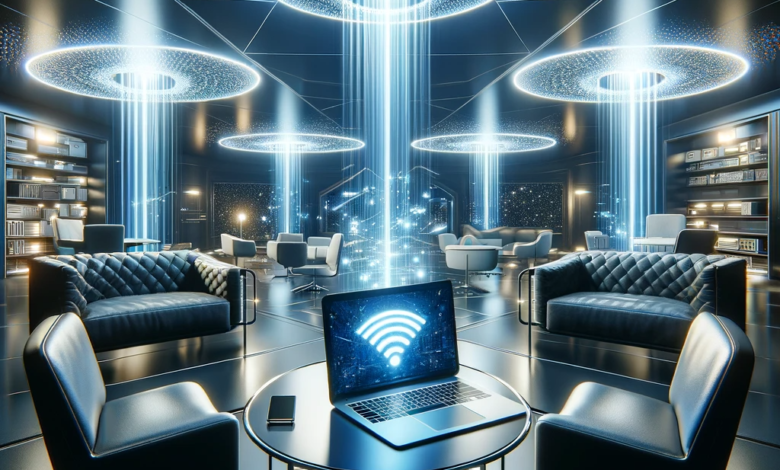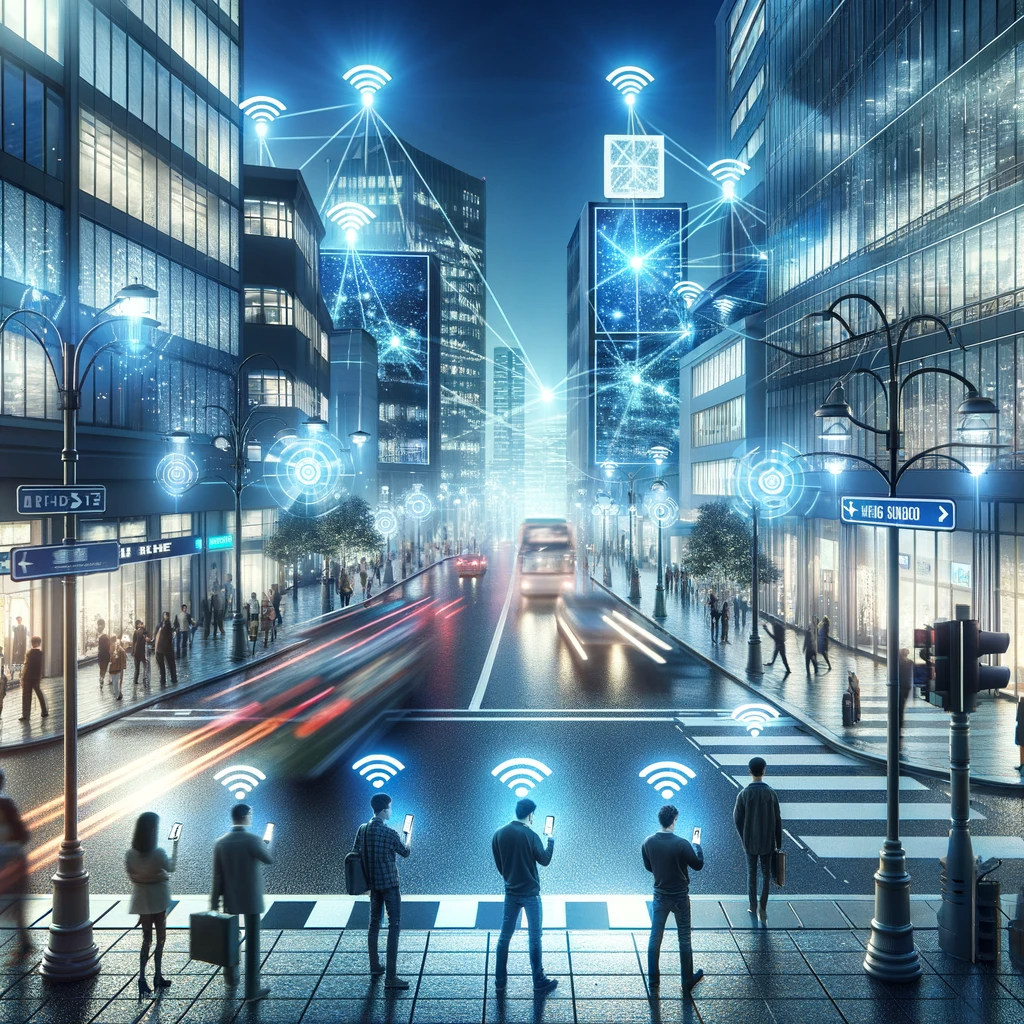The Future of Internet Connectivity: Exploring the World of Li-Fi

Future of Internet Connectivity
World of Li-Fi In an era where the internet has become a pivotal part of our daily lives, the demand for faster, more reliable, and secure internet connectivity is ever-growing. This is where Li-Fi (Light Fidelity) enters the picture, introducing a revolutionary way to transmit data using light. Unlike traditional Wi-Fi, which uses radio waves, Li-Fi leverages LED lights to enable high-speed wireless communication. This introductory section will delve into the fundamentals of Li-Fi technology, exploring how it works and its basic principles.
The Technology Behind Li-Fi
Li-Fi technology utilizes light-emitting diodes (LEDs) to transmit data at high speeds. It works by modulating the light from LEDs at speeds imperceptible to the human eye, turning the light beam into a medium for data transmission. This section will explore the technical mechanisms of Li-Fi, detailing how it differs from conventional Wi-Fi and the advantages of using light as a data transmission medium.

Advantages of Li-Fi over Traditional Wi-Fi
The potential benefits of Li-Fi are vast. Its most notable advantages include higher speeds, increased security, and reduced interference compared to Wi-Fi. This part of the blog will discuss these advantages in detail, emphasizing how Li-Fi could revolutionize internet connectivity in various settings, from homes to offices and public spaces.
Challenges and Limitations of Li-Fi
- Direct Visibility: Li-Fi technology requires a direct line of sight between the LED light source and the receiving device. This necessity for unobstructed paths can limit the flexibility and range of Li-Fi networks, especially in complex or cluttered environments.
Environmental Limitations
- Light Interference: Li-Fi is susceptible to interference from ambient light sources, including sunlight, which can affect the stability and efficiency of data transmission.
- Opaque Obstacles: Walls and other opaque structures can block Li-Fi signals, limiting its usability to a single room or space. This confinement contrasts with Wi-Fi’s ability to penetrate walls, offering broader coverage.
Range and Mobility Issues
- Limited Range: Currently, the effective range of Li-Fi is shorter than Wi-Fi, which can be a limitation in larger spaces or for outdoor applications.
- Mobility Constraints: The need for a stationary light source can restrict the mobility of users. Moving out of the light’s coverage area results in loss of connectivity, which is a significant limitation compared to Wi-Fi.
Integration and Infrastructure
- Upgrading Infrastructure: Implementing Li-Fi requires a complete overhaul of existing lighting systems to LED lights capable of data transmission. This can involve significant costs and logistical challenges.
- Compatibility with Existing Devices: Most current devices are not equipped with sensors or technology to receive Li-Fi signals. This lack of compatibility necessitates additional hardware or modifications to existing devices.
Market Adoption and Awareness
- Awareness and Perception: As a relatively new technology, there is a lack of widespread awareness and understanding of Li-Fi. This can hinder its adoption compared to the well-established and familiar Wi-Fi technology.
- Cost and Investment: The initial investment for setting up a Li-Fi network can be higher than traditional Wi-Fi, potentially discouraging adoption, especially in cost-sensitive markets.
Scalability and Standardization
- Scalability Concerns: Scaling Li-Fi networks for large-scale applications like city-wide or corporate networks poses technical and logistical challenges.
- Lack of Standardization: The absence of global standards for Li-Fi technology can lead to compatibility and interoperability issues, slowing down its adoption and integration with other technologies.

Applications and Key Features of Li-Fi Technology
Li-Fi (Light Fidelity) technology, utilizing light to transmit data, offers a range of unique applications and key features that set it apart from traditional wireless communication methods like Wi-Fi. Here’s a detailed look at its applications and key features:
Key Features of Li-Fi
- High-Speed Data Transmission: Li-Fi is capable of transmitting data at speeds far exceeding current Wi-Fi standards, potentially reaching gigabits per second. This makes it suitable for high-bandwidth activities like streaming high-definition videos or large-scale data transfers.
- Enhanced Security: Unlike Wi-Fi signals, which can penetrate walls and be intercepted, Li-Fi’s light-based signals are contained within a room. This confinement offers a higher level of security, as data cannot be easily accessed from outside the physical space.
- Reduced Interference: Li-Fi uses the visible light spectrum, which is far broader than the radio spectrum used by Wi-Fi, resulting in less congestion and interference from other devices.
- Energy Efficiency: Since Li-Fi can be integrated with LED lighting, it offers dual functionality (illumination and data transmission) while consuming less energy compared to traditional Wi-Fi setups.
- Operational in Sensitive Areas: Li-Fi does not interfere with radio signals, making it ideal for use in environments where electromagnetic interference is a concern, such as hospitals and aircraft.
Applications of Li-Fi
- Smart Homes and Buildings: In residential and commercial buildings, Li-Fi can be integrated into LED lighting systems to provide internet access that is fast, secure, and efficient.
- Healthcare Settings: Hospitals can benefit from Li-Fi’s lack of electromagnetic interference, using it for secure patient data transmission and to avoid interference with medical equipment.
- Transportation: In vehicles like buses or trains, Li-Fi can provide passengers with high-speed internet connectivity. Its use in traffic management systems can also enhance communication between traffic lights and vehicles for improved road safety.
- Industrial Applications: Factories and warehouses can use Li-Fi for automation and control processes, where radio frequency communication may be hindered by interference from heavy machinery.
- Underwater Communication: Unlike radio waves, light can penetrate water, making Li-Fi a potential solution for underwater data transmission in applications like sea exploration or communication between submarines.
- Education Sector: Classrooms can leverage Li-Fi for interactive learning experiences, providing a fast, stable internet connection for educational tools and resources.
- Retail: In retail environments, Li-Fi can be used for targeted advertising and customer engagement, where data transmitted via store lighting can interact with consumers’ smartphones.
- Public Internet Access: Li-Fi can be implemented in public spaces like parks, museums, and libraries, providing secure and fast internet access through street lights and other public lighting fixtures.
The Future of Li-Fi: Trends and Developments
As we look to the future, Li-Fi technology continues to evolve. This section will explore upcoming trends in Li-Fi, including ongoing research, potential future improvements, and how it might coexist with or even replace traditional Wi-Fi in certain scenarios.

The Role of Li-Fi in Shaping Future Connectivity
Li-Fi represents a significant step forward in the world of wireless communication. While it may not completely replace Wi-Fi, its unique advantages position it as a complementary technology that could redefine how we connect to the internet. This final section will summarize the key points discussed in the blog and offer a perspective on how Li-Fi fits into the broader landscape of internet technology.




